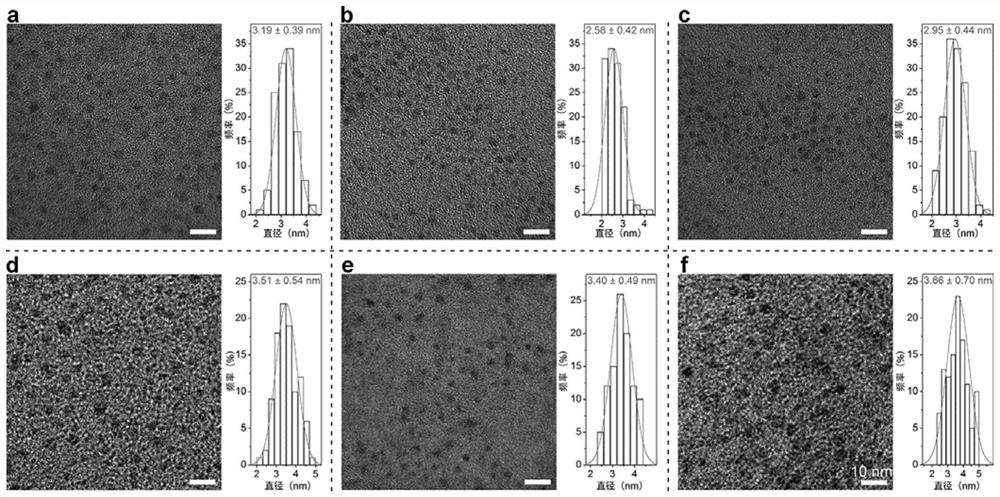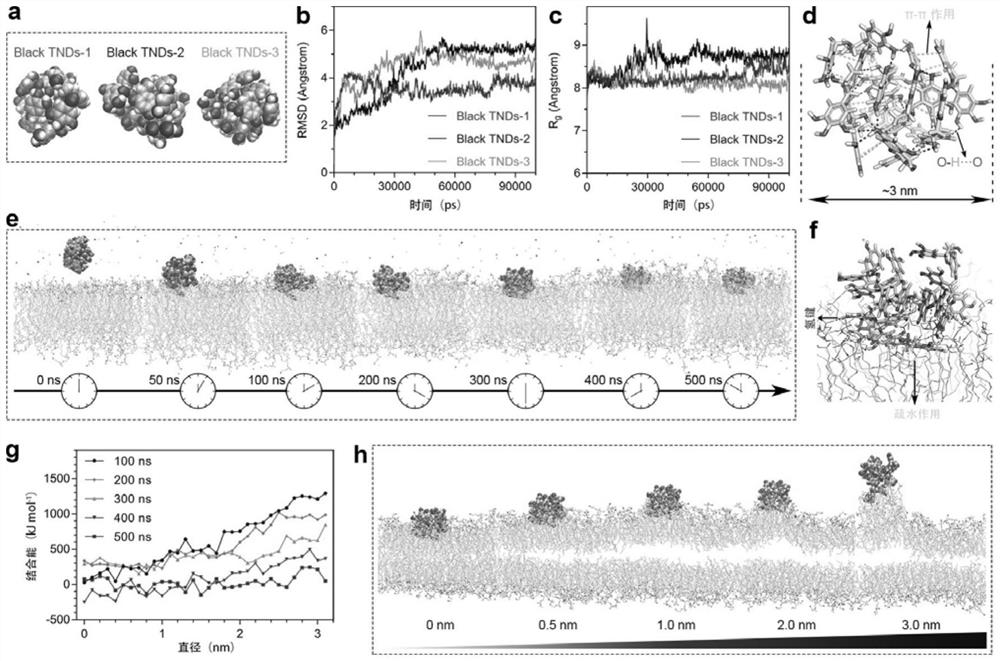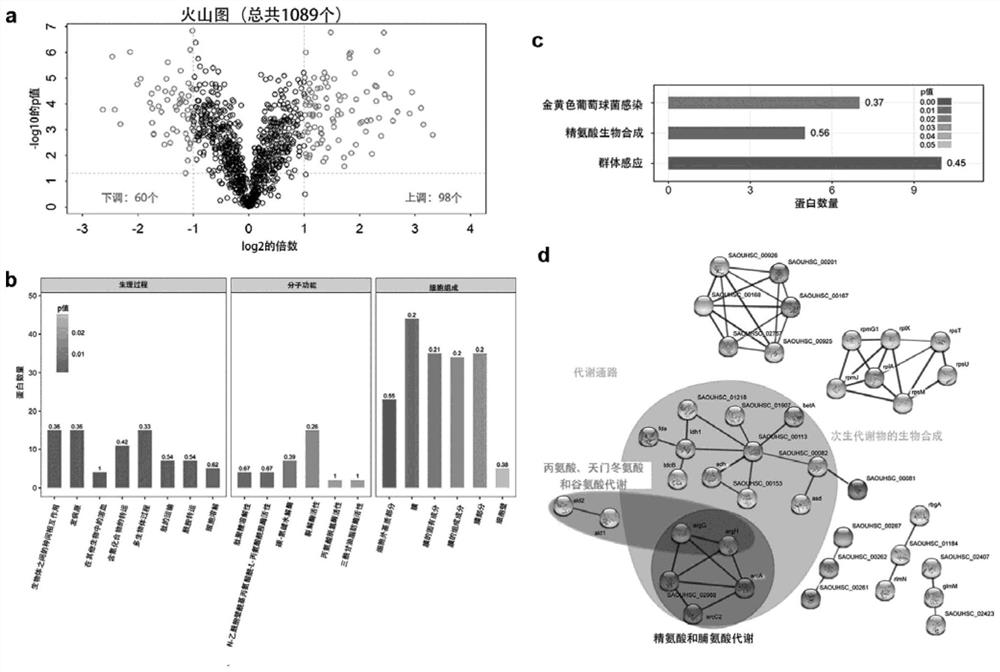Preparation method and application of tea nanodots
A technology of nano-dots and tea leaves, applied in nano-technology, nano-medicine, nano-technology, etc., to achieve high extraction temperature, solve the problem of bacterial drug resistance, and enhance the stability
- Summary
- Abstract
- Description
- Claims
- Application Information
AI Technical Summary
Problems solved by technology
Method used
Image
Examples
Embodiment 1
[0091] A method for preparing tea nano-dots, said method comprising the following steps:
[0092] 1) Pulverization: take the dry tea leaves of black tea, cut them into particles smaller than 0.5cm with scissors, and grind the tea particles into uniform tea powder with a mortar, the particle diameter of the tea powder is 0.8mm;
[0093]2) Extraction: 5g of the tea powder is mixed with 75g of water, placed in the polytetrafluoroethylene liner of the autoclave for hydrothermal reaction, sealed and placed in the polytetrafluoroethylene liner of the autoclave In the muffle furnace, raise the temperature of the muffle furnace to 80°C at a rate of 2°C / min, and keep it for 6 hours. The reaction pressure in the polytetrafluoroethylene liner of the high-pressure reactor is 1.6 standard atmospheric pressure. At room temperature, the crude extract was obtained;
[0094] 3) Separation: filter the crude extract with a filter cloth (150 mesh) to remove solids with a particle size greater th...
Embodiment 2
[0126] Taking Black TNDs as the research object, the construction of Black TNDs and the molecular dynamics (MD) simulation of the transmembrane process of Black TNDs are carried out, including the following parts:
[0127] 1. Obtain the top three Black TNDs models through molecular docking, and then evaluate their stability through MD simulation (100ns)
[0128] Construction of Black TNDs: Construction of Black TNDs by all-atom molecular dynamics (MD) simulations. First, construct the three-dimensional structures of eight molecules (CA, GC, CG, GCG, EC, EGC, ECG and EGCG), and use AutodockTools to assign them AD atom types respectively, then hydrogenate, charge, and finally save as ". pdb" type of file. Using the HEX8.0 program to sequentially dock the eight molecules constructed, the corresponding lowest energy modes among the eight molecules were calculated and selected as the input file for the next molecular docking. Then, the possible interaction modes and structural mo...
Embodiment 3
[0137] MRSA proteomic analysis of Black TNDs treatment, specifically including the following parts:
[0138] 1. Tandem mass tagging (TMT) technology for quantitative proteomics analysis: collect untreated and BlackTNDs-treated MRSA bacteria as bacterial samples for proteomic analysis, wash the bacterial samples 3 times, then add SDT lysate, and sonicate Treatment accelerated cell lysis, then boiled for 15 minutes, centrifuged at 14,000g for 40 minutes at 4°C, and the corresponding supernatant was quantified with a BCA protein assay kit (Bio-Rad, USA). The samples should be stored at -80°C before use. °C conditions. Next, protein samples were separated and visualized by SDS-PAGE. The filter-assisted sample preparation (FASP) method is performed during the enzymatic digestion of proteins. Additionally, the peptide mixture of each sample was labeled using TMT 6 / 10plex Isobaric Labeling Reagent (Thermo), and the TMT-labeled samples were fractionated using the Pierce High pH Reve...
PUM
 Login to View More
Login to View More Abstract
Description
Claims
Application Information
 Login to View More
Login to View More - R&D
- Intellectual Property
- Life Sciences
- Materials
- Tech Scout
- Unparalleled Data Quality
- Higher Quality Content
- 60% Fewer Hallucinations
Browse by: Latest US Patents, China's latest patents, Technical Efficacy Thesaurus, Application Domain, Technology Topic, Popular Technical Reports.
© 2025 PatSnap. All rights reserved.Legal|Privacy policy|Modern Slavery Act Transparency Statement|Sitemap|About US| Contact US: help@patsnap.com



